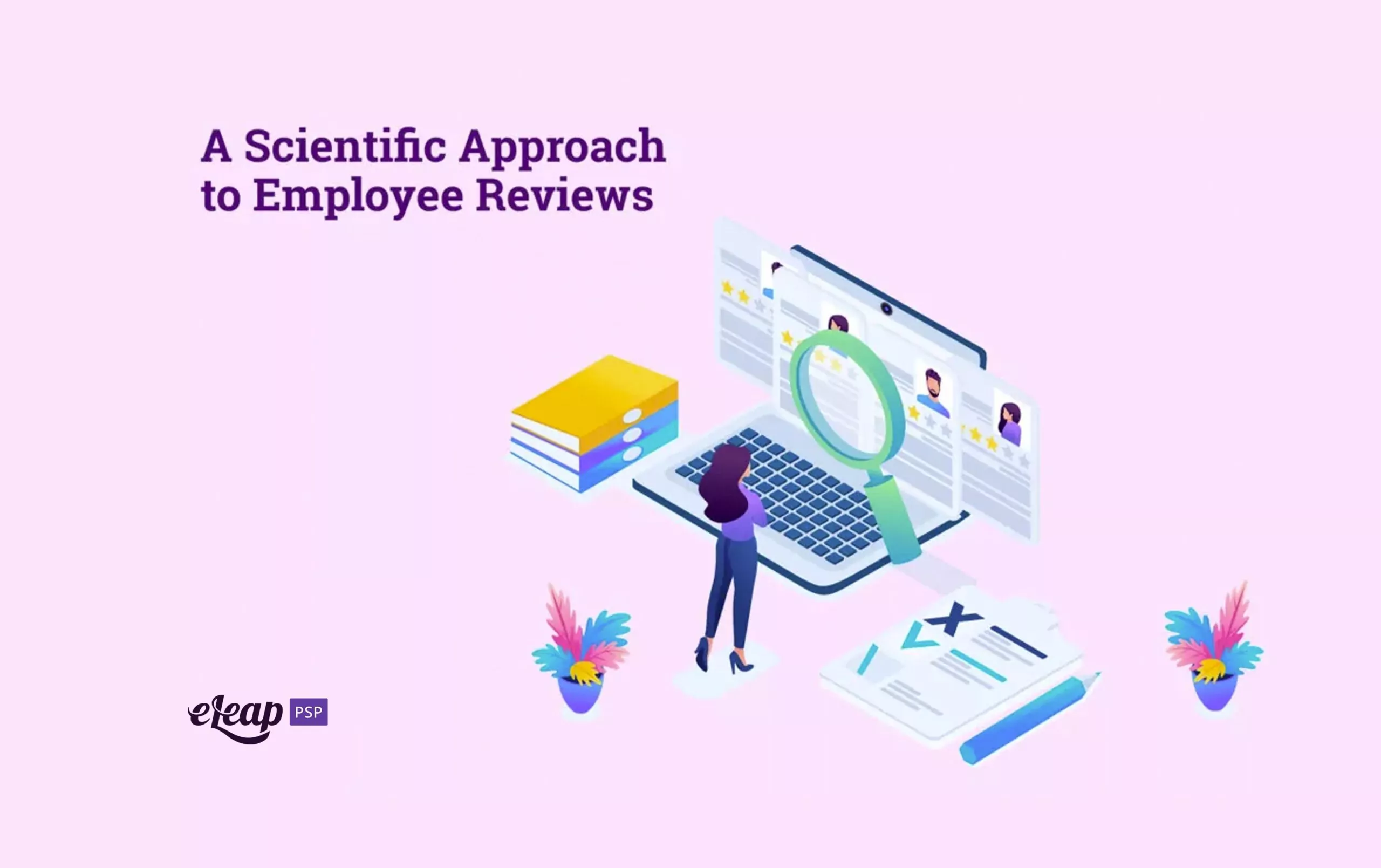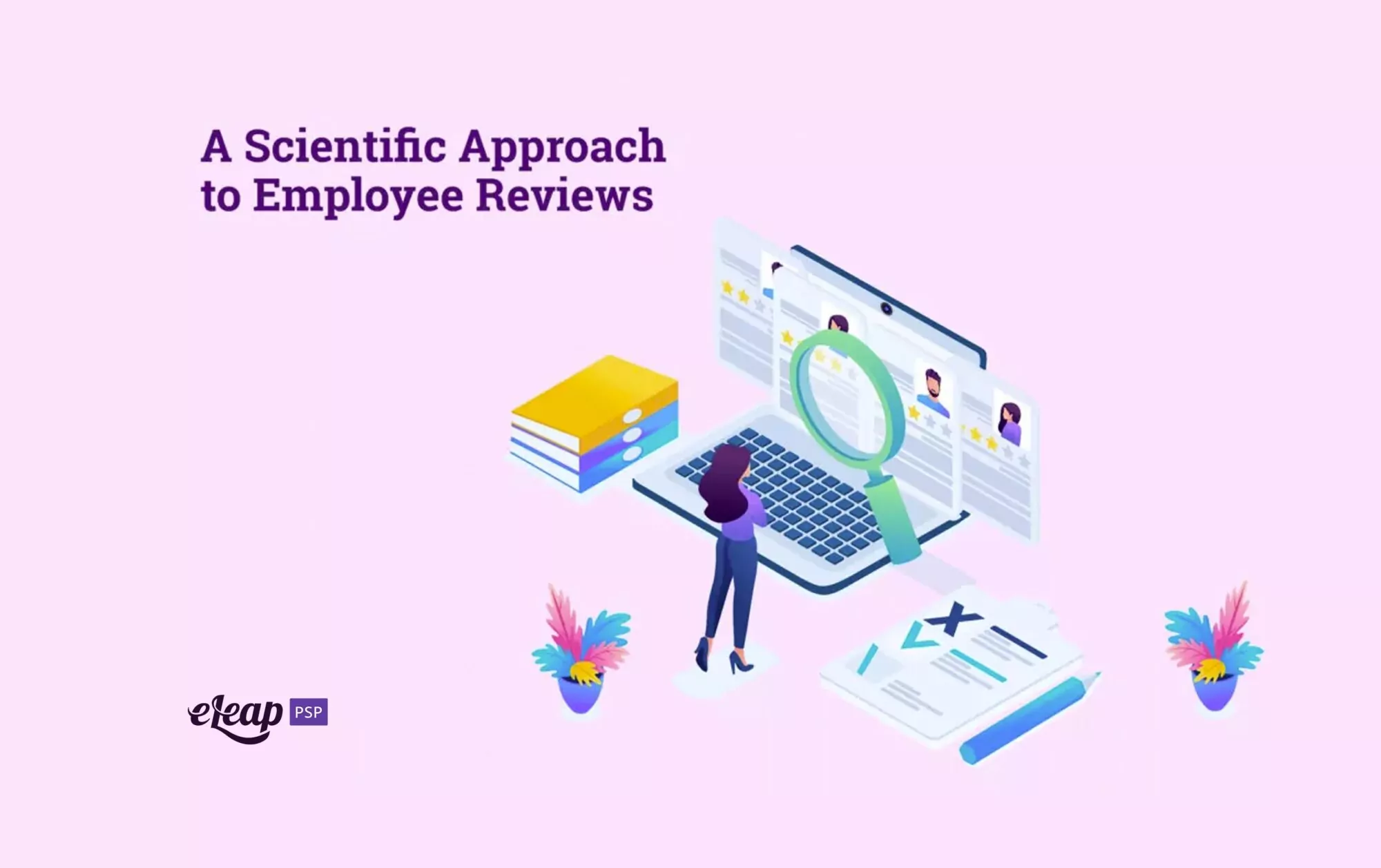A Scientific Approach to Employee Reviews

Employee reviews have been part and parcel of the performance management process pretty much since the dawn of time. They’ve also changed very little over the years. That alone should be enough to make you reconsider how you use them.
However, mounting evidence shows that you might want to reconsider your approach for another reason – manager bias. Even the most conscientious manager may find that they have internal biases that unconsciously affect the outcome of a traditional review. What’s the solution? A new employee review approach based on science.

What’s Really Wrong with Your Reviews
The conventional employee review process is deeply flawed. In most cases, you probably follow a system that gives employees numerical ratings based on performance, mistakes, accolades, and things like that. The issue here is that reducing the entirety of an individual to a number is pretty demotivating. How would you like to be summed up and found to be a 3.5 out of 5?
It makes you feel more like a commodity – a so-so frying pan on Amazon, maybe. We’re talking about complex human beings here. Having someone tell you that you’re just a 4 out of 5 is demoralizing.
There’s also the fact that just assigning a numerical value to an employee doesn’t do anyone any good. Where’s the ability to give feedback? How do you use that to encourage and motivate your team? It really doesn’t give you much chance for improvement.
Another popular review method is called performance calibration, and while it might seem to get around the issue we talked about above, it’s truly no better. In this situation, a group of managers discuss each employee and their performance, coming to a consensus on their rating. Superficially, that seems better, but it’s not. The reason for this is it introduces more human elements – hidden biases, agendas, and personal quirks, which do nothing but skew the picture of the employee in question.
The Path Forward
So, what are you to do? Is there a way to eliminate human-borne biases and problematic views? There is. There are many options. The challenge now becomes finding the right one.
Just because you no longer use fixed ratings, or the performance calibration method, it doesn’t mean that whatever replaced that system is up to the task. It must be actionable, objective, and capable of delivering accurate data on demand. You must also work on both sides of the equation – managers and employees.
The Manager Review
Before they can objectively assess and review employee behavior and performance, managers must be assessed. The manager review should provide several advantages, including the following:
- The ability to identify and reduce manager bias
- The ability to objectively assess employees based on data, not sentiment
- The ability to communicate the need for improvement in clear language
- The ability to motivate employees toward improvement rather than threaten, cajole, or demotivate
Manager reviews should be baked into the new performance management process and must be coupled with individual employee reviews. We recommend that each employee has the chance to review their manager’s performance at the same time the manager is reviewing their performance. This ensures that employees can give vital feedback and have their voices heard. That’s a powerful motivating force.
The Employee Review
The new employee review model is dramatically different from anything that has come before. Rather than having a manager benchmark employee performance on a set of predefined “ideal” behaviors and how close the employee came to those imaginary goals, it takes a scientific approach. It’s also multi-pronged. Below, we’ll outline the process and help you understand why each component is important.
Who Handles the Review?
In the past, managers reviewed individual employees, and that was the end of it. That’s inflexible, inaccurate, and inadvisable. Instead, the new model allows the employee to review themselves, the manager to review the employee, and peers to provide their input, as well. When you’re dealing with something as complex as human behavior and emotions, your image must be built up in layers and from multiple perspectives, as this is the only way to ensure accuracy.
What Areas Are Covered?
This scientific approach requires that multiple areas of employee behavior and competency be covered. These include the following:
- Collaboration
- Teamwork
- Insight-driven performance
- Interpersonal skills
- Ability to build networks
- Ability to attract new talent
- Ability to develop talent
- Values differences in the workplace
- Ability to drive outcomes
Now, obviously, those attributes will vary based on employee roles and other factors. Someone who has no hand in hiring can’t very well be evaluated over their ability to attract new talent, for instance.
Remove Compensation from the Picture
As a final note, it’s important that your employee review process not be tied to compensation. That’s the carrot-and-stick method, and it’s been proven worthless. When you dangle someone’s financial future in front of them, basing it strictly on performance reviews, you demotivate and demoralize your workforce. Change the paradigm.
Instead, performance reviews should be about learning and development. Yes, it can be quite the mindset shift for some organizations. However, without making that leap, you’re never going to be able to develop the people you need to succeed.
Fair, Flexible, and Objective
Employee performance assessments can be invaluable tools in the performance management process. The problem is that you can’t rely on what has come before. It’s time to ditch outmoded, outdated performance reviews that rely on manager bias and the threat of punitive action. Instead, take a more holistic approach. Focus on employee growth, accurate data, objectivity, and finding a path forward without threatening your employees’ financial future. If you can do so, the difference will astound you.